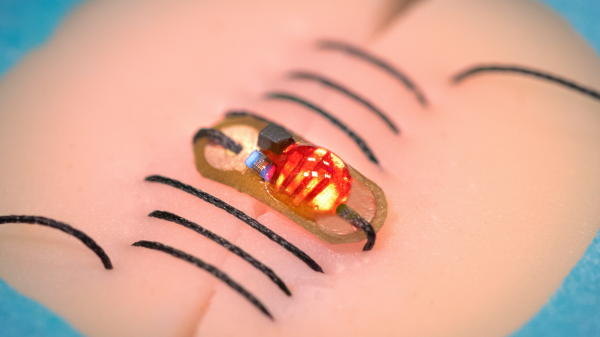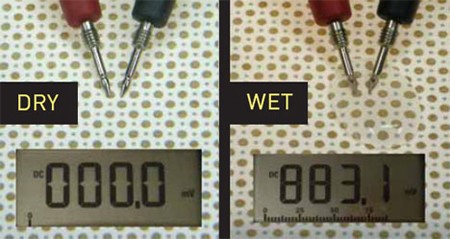A team at the Wireless Bioelectronics Lab at the National University of Singapore led by [Dr John Ho] announced the results of their new Wireless Sensing (WiSe) smart sutures program last month. Their system consists of a specially prepared patch of polymer gel (the sensor) which is sewn into the wound using a silk suture coated with a conductive polymer. An external reader scans the sensor to monitor the status of the wound.
The concept is not unlike a NFC public transportation card, although with simplified electronics. There is no microcontroller or digital data being transferred. Rather, the sensor behaves like a tuned tank. The gel on the sensor was designed to degrade if the wound becomes infected, changing capacitance of the sensor structure and thus shifting its resonant frequency.
If you’ve ever had the misfortune to experience surgery, no doubt the surgeon and nurses drove home the importance of diligent monitoring of the wound for early signs of infection. These smart sutures allow detection of wound infection even before symptoms can seen or felt. They can be used on internal stitches up to 50 mm inside the body. More details can be read in this paper, and we covered another type of smart sensor back in 2016.













